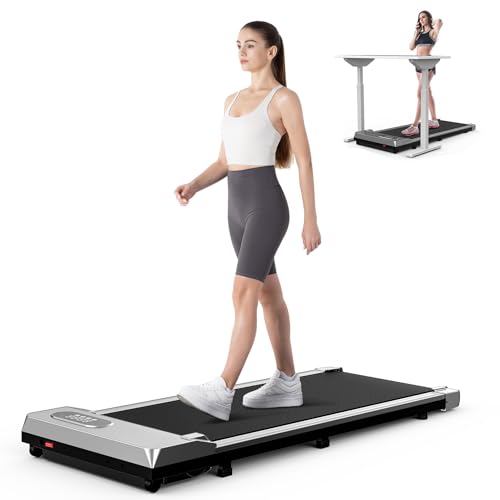Five Gym Treadmill Lessons From The Professionals
Treadmills: A Comprehensive Guide to Understanding Their Functionality, Benefits, and Appropriate Selection
Intro
Treadmills have actually become a staple in modern fitness routines, both in homes and gyms worldwide. image source offer a practical and efficient method to maintain cardiovascular health, increase endurance, and help in weight management. This article explores the different types of treadmills, their benefits, features to think about when acquiring, and some FAQs to direct users in making informed choices.
Types of Treadmills
When it pertains to selecting a treadmill, it is essential to comprehend the various types offered in the market. Here are the main classifications:
1. Handbook Treadmills
- Mechanism: These treadmills have an easy design and count on the user's efforts to move the belt.
- Pros: More inexpensive, quieter operation, no electricity needed.
- Cons: Limited features, may not offer the very same variety of workout strength.
2. Motorized Treadmills
- System: Powered by a motor that drives the belt, enabling users to stroll or run at a set rate.
- Pros: Greater range of speeds and slopes, geared up with many functions such as heart rate screens and exercise programs.
- Cons: More expensive and might require more upkeep.
3. Folding Treadmills
- Mechanism: Designed for those with restricted space, these treadmills can be folded for easy storage.
- Pros: Space-saving, often motorized, versatile functions.
- Cons: May be less long lasting than non-folding models.
4. Business Treadmills
- Mechanism: High-quality machines designed for usage in fitness centers and gym.
- Pros: Built to withstand heavy usage, advanced functions, frequently include guarantees.
- Cons: Pricey and not ideal for home usage due to size.
5. Curved Treadmills
- Mechanism: A distinct style that enables users to move the belt using their own energy.
- Pros: Offers a more natural running experience, promotes better running form.
- Cons: More expensive and can be noisier.
Treadmill Type
Pros
Cons
Handbook
Inexpensive, no electrical power needed
Minimal features
Motorized
Variety of speeds, advanced functions
Upkeep needed
Folding
Space-saving, typically motorized
May do not have durability
Industrial
Developed to last, professional-grade functions
Pricey
Curved
Natural running experience, promotes excellent kind
Higher cost
Benefits of Using Treadmills
Treadmills offer many advantages that can contribute to one's general fitness goals. Some of these advantages include:
- Convenient Workouts: Treadmills allow users to exercise indoors no matter weather.
- Cardiovascular Health: Regular use can improve heart health by increasing endurance and promoting healthy circulation.
- Weight Management: Effective for burning calories, which assists in weight loss and management.
- Adjustable Workouts: Users can manage speed, incline, and duration to produce personalized exercise experiences.
- Security: Treadmills offer a predictable surface, decreasing the threat of falls compared to outdoor running.
- Multifunctional: Many treadmills featured functions like heart rate monitors, exercise programs, and even entertainment systems.
Picking the Right Treadmill
When picking a treadmill, potential purchasers need to consider numerous essential aspects:
Features to Consider:
- Motor Power: Typically measured in horse power (HP), a motor strength of a minimum of 2.5 HP is suggested for major runners.
- Belt Size: A longer and larger belt accommodates numerous stride lengths, supplying comfort throughout exercises.
- Slope Settings: Adjustable slope functions imitate outside hill running and can increase workout strength.
- Weight Capacity: Ensure the treadmill can support the user's weight for safety and longevity.
- Console Features: Look for easy to use dashboards, exercise programs, and Bluetooth compatibility for streaming music or other functions.
Spending plan Considerations
- Under ₤ 500: Entry-level manual treadmills ideal for casual walkers.
- ₤ 500 – ₤ 1,500: Mid-range motorized treadmills that provide more features and much better resilience.
- ₤ 1,500 – ₤ 3,000: High-end designs with sophisticated innovation, larger motors, and longer warranties.
- Over ₤ 3,000: Commercial-grade treadmills perfect for regular usage in health clubs or training facilities.
Regularly Asked Questions (FAQs)
1. How typically should I utilize a treadmill?
It is suggested to utilize a treadmill at least three to 5 times a week, integrating different strength levels for best results.
2. Can I reduce weight by using a treadmill?
Yes, consistent use of a treadmill can add to weight reduction, specifically when integrated with a well balanced diet plan and strength training.
3. What is the best speed to stroll on a treadmill for novices?
A speed of 3 to 4 miles per hour is a suitable variety for beginners. It's necessary to start slow and slowly increase rate as comfort and endurance enhance.
4. Do I require to utilize a treadmill if I already run outdoors?
Utilizing a treadmill can provide fringe benefits, such as regulated environments and differed exercises (slope, periods) that are not always possible outdoors.
5. How do I preserve my treadmill?
Regular upkeep consists of lubing the belt, cleaning the deck and console, and inspecting the motor for optimal efficiency.
Treadmills are important tools for those aiming to enhance their fitness levels in a controlled and practical way. With various types offered, comprehending their functions and benefits is vital for making a notified purchase. By considering personal exercise requirements, space schedule, and spending plan restraints, individuals can find the most suitable treadmill that fits their way of life. Incorporating treadmill workouts into a well balanced fitness routine can cause improved health results and a satisfying workout experience.
